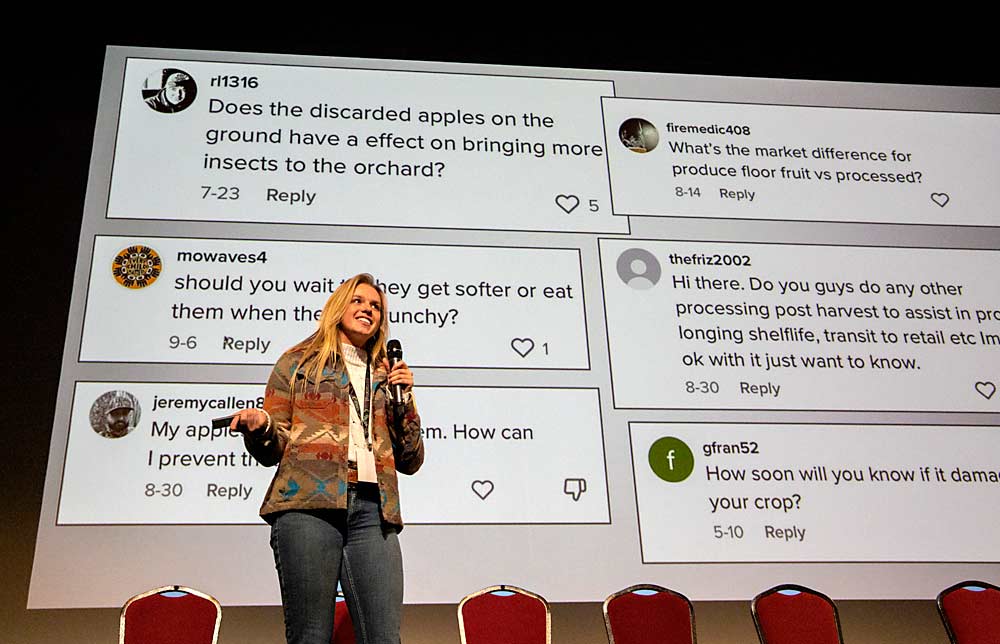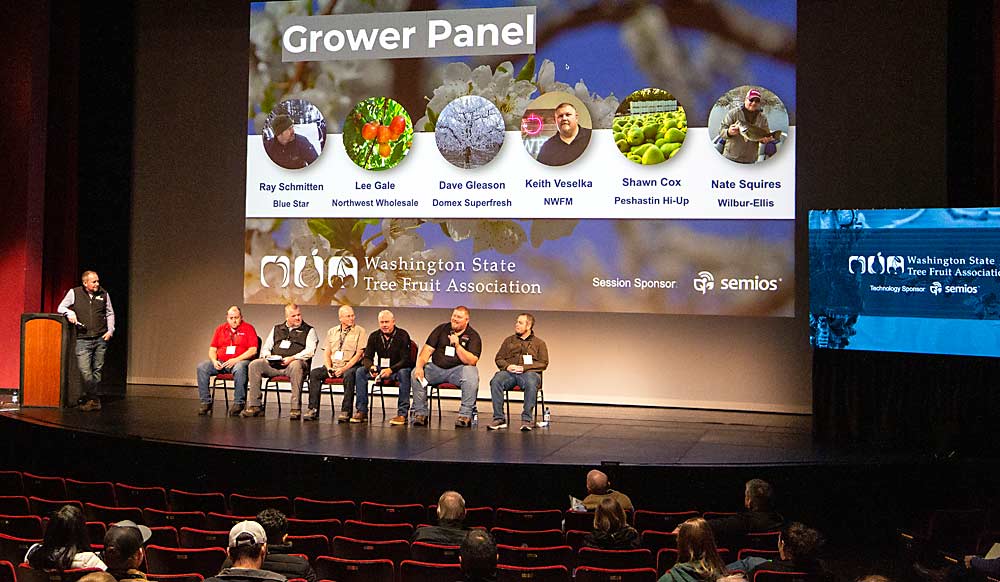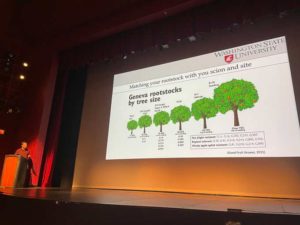
A bevy of growers and industry representatives discussed topics ranging from political advocacy and social media to variety decisions and catching farm thieves during a session at the Washington State Tree Fruit Association Annual Meeting in December in Wenatchee.
The eclectic session, titled “Set the Vision: From Healthy Soils to the Perfect Fruit,” featured presentations by technology experts, a social media influencer and two grower panels.
A panel discussion of digital tools elicited a crowd-pleasing anecdote from Keith Veselka, co-owner of NWFM, a farm management company with tree fruit acreage in Central Washington. The company had recently installed Samsara tracking tools on its labor vans, tractors and other equipment at a farm near Mattawa. A thief made off with a four-wheeler and a side-by-side ATV in the wee hours one morning. The two vehicles are worth more than $25,000 combined.
“Because we had trackers on the vehicles, we were monitoring them and alerted the sheriff, and we had both pieces of equipment back on our farm by 10 a.m.” he said.
Nick Willett of Gilbert Orchards addressed the rising complexity of digital orchard management tools, lamenting that growers must navigate a dozen or more apps on their smartphones and make sense of how much data they generate. It’s a challenge for his company, too.
Gilbert Orchards is experimenting with Tableau, an analytical software that may be able to integrate all that data into charts, graphs and other visual tools.
“This is something we are looking at,” he said.

Ray Schmitten, a grower and horticulturist for the Blue Star Growers pear cooperative, considers learning curves the “tuition” for new technology. Either you pay a tech company to interpret data or hire in-house employees to do it. He has had good results with both, he said.
Schmitten Orchards hires a high school student to physically check irrigation sensors a few times a week and document the information on a spreadsheet. However, he relies on Semios technology to start, stop and track his wind machines. There is a cost to both.
“You can pay tuition one way or another,” Schmitten said.
Dave Gleason, horticulturist and proprietary variety developer for Domex Superfresh Growers, discussed the difficulties in selecting new varieties. It’s hard to know what will stand out in the market, he said. The only apple for which the market demands production is Honeycrisp, despite its challenges.
The reliance on Honeycrisp “doesn’t make sense as we look at our carbon footprint and what’s reasonable, and yet it’s the market that drives our business,” Gleason said.
Each variety has a new learning curve, he said. Gala was “the apple from hell” when Washington growers started with it, he said, but they got better, and it became a foundational variety for the state.
Industry unity, the theme of the entire conference, came up more than once in the session. For example, Wenatchee River Valley pear grower Shawn Cox suggested H-2A contract sharing among small growers. Growers have different ideas and different needs, but they need to work together, he said.
“That’s something I’m excited about,” he said.
Lee Gale of Northwest Wholesale suggested a unified voice to appeal to lawmakers and bureaucrats for help with H-2A reforms and exports, especially if both cherries and apples have full crops in the coming years.
“If that happens … we will fail,” he said. “We don’t have an answer.”
Gale suggested the industry collectively decide to limit production of certain varieties.
“I don’t think it’s so much: ‘What are you going to plant?’” he said. “I would like the industry to look at: ‘What are we going to get rid of?’”
Another crowd pleaser was Kaitlyn Thornton, a fourth-generation Tonasket grower, Washington State University student and social media influencer who encouraged growers to document and share their farming experiences on social media. Consumers like to know the stories behind the food they eat.
“Let’s make some changes happen,” she said.
—by Ross Courtney







Leave A Comment